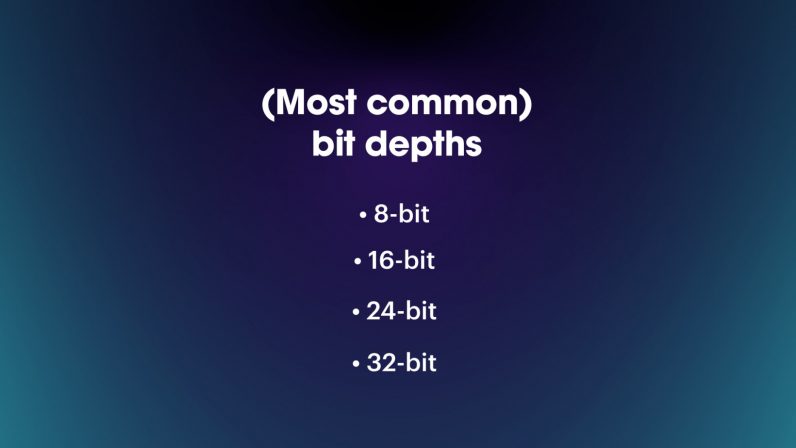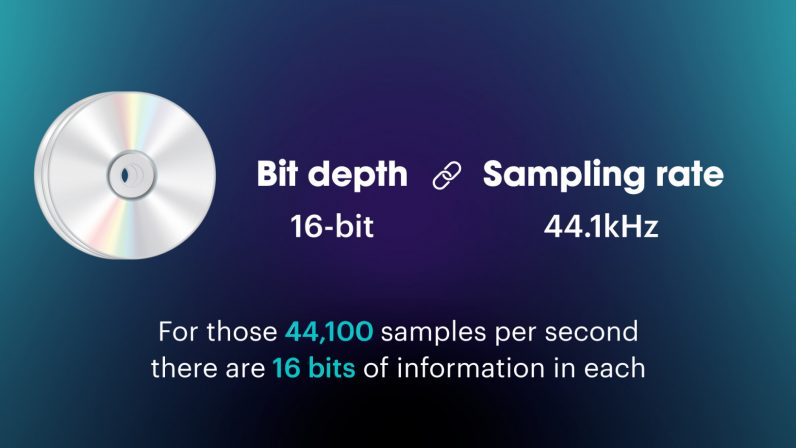First off, bit depth is one of two metrics involved in measuring the quality of a piece of digital music. The first of these is sampling rate. We’ve covered what this is here, but for a short summary it’s the number of “samples” taken per second from an analog sound wave to turn it digital. Think of it like the audio version of a TV’s frame rate: lots of individual points played one after to give the impression of ever-flowing sound. And, if we continue this metaphor, bit depth is the resolution, effectively how much data there is in one of these points or samples. Of course, bit depth isn’t the same as television resolution, but it is a useful way of visualizing the term. Anyway, let’s dive a little deeper. There are several bit depths, as this wonderful diagram shows: The most common bit depth is 16-bit, this is the CD-standard and what you’ll find with the majority FLAC files, which are a lossless music format. What this means is the digital audio file has 16 bits of information in every sample. When this is combined with the CD sample rate (44.1kHz), this means that every second there are 44,100 samples taken and each of them contain 16 bits of data. Simple, right?
What impact does bit depth have on music?
Well, if a bit depth is too low, the quality will suffer. Specifically, you’ll find a fair chunk of the quiet sounds will be lost. On records or files with a high bit depth, you’ll have a far more accurate playback — up to a point. But we’ll get to that shortly. Something bit depth controls is the dynamic range of a sound. This is the difference between how quiet and loud respective parts of the audio is. And, the higher the bit depth (8-bit, 16-bit, 24-bit, and 32-bit being the most common), the more dynamic range is available. But… this is where we come to the fork in the road. Apologies, audio nerds, but it’s incredibly unlikely anyone will hear the different between a 16-bit bit depth and anything higher. There is an argument to be made for recording audio with a bit depth above 16-bit (this is mainly just to give the engineer as much flexibility as possible), but for listeners? Those 24-bit FLAC files are rarely worth the space. Anyway, we’re coming to the end of this piece, so let’s refresh. Fundamentally, bit depth describes how much data is taken per sample in an audio file. Have a look at this to help out: And the other thing to remember? Bit depth controls the dynamic range of tracks, which can be understood to be the difference between the quietest and loudest sounds in a piece of audio. Phew, haven’t we learnt some stuff? This piece is part of a series revolving around CDs and you can find that Big Beefy Boy post right here. Go on, click, you’re gonna love it.

